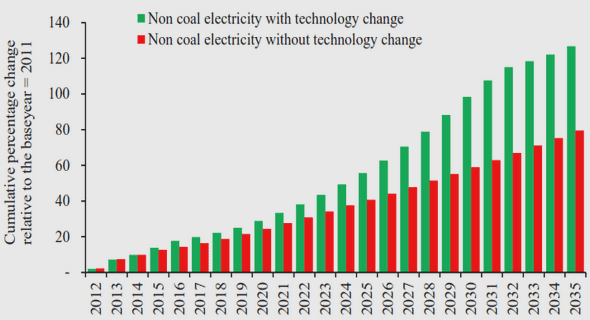(Downloads - 0)
For more info about our services contact : help@bestpfe.com
Table of contents
Chapter I. Introduction
1.1 Fuel cell technologies and industrial overview
1.1.1 Energy issues of today’s society
1.1.2 Fuel cell technology: operating principle, applications and types of fuel cells
1.1.3 Fuel cell industrialization and market
1.2 PEMFC – Proton Exchange Membrane Fuel Cell
1.2.1 Single cell: electrochemical reactions and membrane electrode assembly (MEA)
1.2.2 Proton Exchange Membrane (PEM)
1.2.3 Catalytic layers
1.2.4 Gas diffusion layers (GDLs)
1.3 From single cell to stack and fuel cell system
1.4 Degradation mechanisms of MEAs during PEMFC operation
1.4.1 PEM and ionomer degradation during PEMFC operation
1.4.2 Pt nanoparticles degradation during PEMFC operation
1.4.3 Carbon support degradation during PEMFC operation
References
Chapter II. Experimental Section
2.1 Electrocatalysts
2.2 Electrochemical measurements
2.3 Preparation of the catalytic inks and of the porous catalytic layers
2.3.1. Preparation of the catalytic inks
2.3.2. Preparation of the porous catalytic layers
2.4 Electrochemical characterization
2.5 Accelerated stress tests (ASTs)
2.6 PEMFC testing
2.7 Ex situ preparation of the fresh/aged MEAs cathode electrocatalysts
2.8 Characterization of the fresh and aged electrocatalysts
2.8.1 Physical techniques…
2.8.2 Chemical techniques
2.8.3 Electrochemical techniques
References
Chapter III. From Pt/C electrocatalysts suspensions to accelerated stress tests
3.1 Introductory note to Raman spectroscopy of carbon materials and accelerated stress tests protocols
3.2 Structural properties of carbon supports
3.3 Preparation of catalysts’ suspensions
3.3.1 Definition of the initial surface state and effect of Nafion® on the carbon support
3.4 Effect of storage of the ink under air atmosphere on the carbon support
3.4.1 Effect of short-term storage of the ink
3.4.2 Effect of long-term storage of the ink
3.5 Role of intermediate characterizations, nature of the carbon support, gas atmosphere and potential limits on ECSA and Q/HQ redox couple during ASTs
3.5.1 Electrochemical evidences on the influence of intermediate characterizations on ECSA and Q/HQ redox couple evolution
3.5.2 Structural modifications of the Pt/HSAC electrocatalyst induced by intermediate characterizations followed by IL-TEM
3.6 Influence of the nature of the carbon support, the gas atmosphere and the potential limits used in ASTs
3.6.1 Electrochemical results
3.6.2 Structural modifications of the carbon supports after the ASTs
3.6.3 Structural modifications of the Pt nanoparticles after the ASTs
3.7 Conclusion
References
Chapter IV. Carbon corrosion in PEMFCs : from model experiments to real-life operation in MEAs
4.1 Introduction
4.2 Results and Discussion
4.2.1 Electrochemical characterization
4.2.2 Physical characterization
4.2.3 Chemical characterization
4.2.4 Comparison with MEA operated on site during 12,860h
4.2.5 Degradation mechanism of HSAC supports
4.3 Conclusion
References
Chapter V. Carbon corrosion induce by membrane failure: the weak link of PEMFC longterm performance
5.1 Introduction
5.2 Results and Discussion
5.2.1 110 cell system operating performance
5.2.2 In situ evidences of performance heterogeneities at the stack and the MEA level
5.2.3 Linking degradation of electrical performance to membrane failures
5.2.4 Linking the degradation of the cathode catalytic layer and of the electrical performance to the membrane failures
5.3 Discussion
5.4 Conclusion
References
Chapter VI. Conclusion and Outlook



